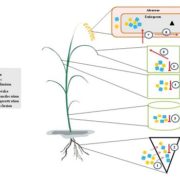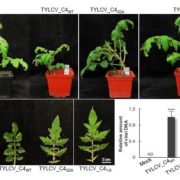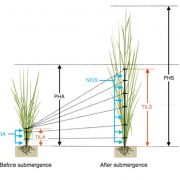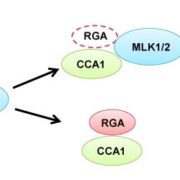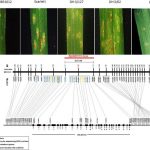A simple arsenic detoxification strategy in the fern Pteris vittata ($) (Curr Biol)
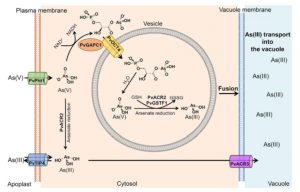 Arsenic contamination is a growing human health threat. The fern Pteris vittata demonstrates a remarkable capacity to accumulate and sequester high levels of the toxic heavy metal arsenic from contaminated environments. Cai et al. used an ‘omics’-guided approach to identify and characterize the molecular mechanisms that afford arsenic tolerance in Pteris. De novo transcriptome analysis of P. vittata gametophytes (haploid life stage) grown with or without arsenate revealed a limited set of arsenate-induced genes that either lacked functional annotation or had predicted roles in transport, phosphate metabolism, or stress responses. Using RNAi-based gene silencing, the authors demonstrated critical roles for three genes in establishing arsenate tolerance in P. vittata; PvGAPC1 (GLYCERALDEHYDE 3-PHOSPHATE DEHYDROGENASE), PvOCT4 (ORGANIC CATION TRANSPORTER4), and PvGSTF1 (GLUTATHIONE S-TRANSFERASE). Further genetic and biochemical analyses led the authors to propose a likely model for arsenate detoxification in Pteris, which begins with the chemical conversion of arsenate to 1-arseno-3-phosphoglycerate through PvGAPC1, the subsequent transportation of this intermediate into specialized arsenate-metabolizing vesicles through the PvOCT4 transporter, followed by reconversion back to arsenate and chemical reduction to form arsenite that is ultimately transported into the vacuole. This mechanism bears striking resemblance to an arsenic tolerance mechanism described in the Gram-negative bacterium Pseudomonas aeruginosa, which similarly detoxifies arsenic through the 1-arseno-3-phosphoglycerate intermediate. Collectively, the data elegantly illustrate an instance of convergent evolution for the detoxification of arsenic that was independently acquired in ferns and bacteria. (Summary by Phil Carella) Curr. Biol. 10.1016/j.cub.2019.04.029
Arsenic contamination is a growing human health threat. The fern Pteris vittata demonstrates a remarkable capacity to accumulate and sequester high levels of the toxic heavy metal arsenic from contaminated environments. Cai et al. used an ‘omics’-guided approach to identify and characterize the molecular mechanisms that afford arsenic tolerance in Pteris. De novo transcriptome analysis of P. vittata gametophytes (haploid life stage) grown with or without arsenate revealed a limited set of arsenate-induced genes that either lacked functional annotation or had predicted roles in transport, phosphate metabolism, or stress responses. Using RNAi-based gene silencing, the authors demonstrated critical roles for three genes in establishing arsenate tolerance in P. vittata; PvGAPC1 (GLYCERALDEHYDE 3-PHOSPHATE DEHYDROGENASE), PvOCT4 (ORGANIC CATION TRANSPORTER4), and PvGSTF1 (GLUTATHIONE S-TRANSFERASE). Further genetic and biochemical analyses led the authors to propose a likely model for arsenate detoxification in Pteris, which begins with the chemical conversion of arsenate to 1-arseno-3-phosphoglycerate through PvGAPC1, the subsequent transportation of this intermediate into specialized arsenate-metabolizing vesicles through the PvOCT4 transporter, followed by reconversion back to arsenate and chemical reduction to form arsenite that is ultimately transported into the vacuole. This mechanism bears striking resemblance to an arsenic tolerance mechanism described in the Gram-negative bacterium Pseudomonas aeruginosa, which similarly detoxifies arsenic through the 1-arseno-3-phosphoglycerate intermediate. Collectively, the data elegantly illustrate an instance of convergent evolution for the detoxification of arsenic that was independently acquired in ferns and bacteria. (Summary by Phil Carella) Curr. Biol. 10.1016/j.cub.2019.04.029


